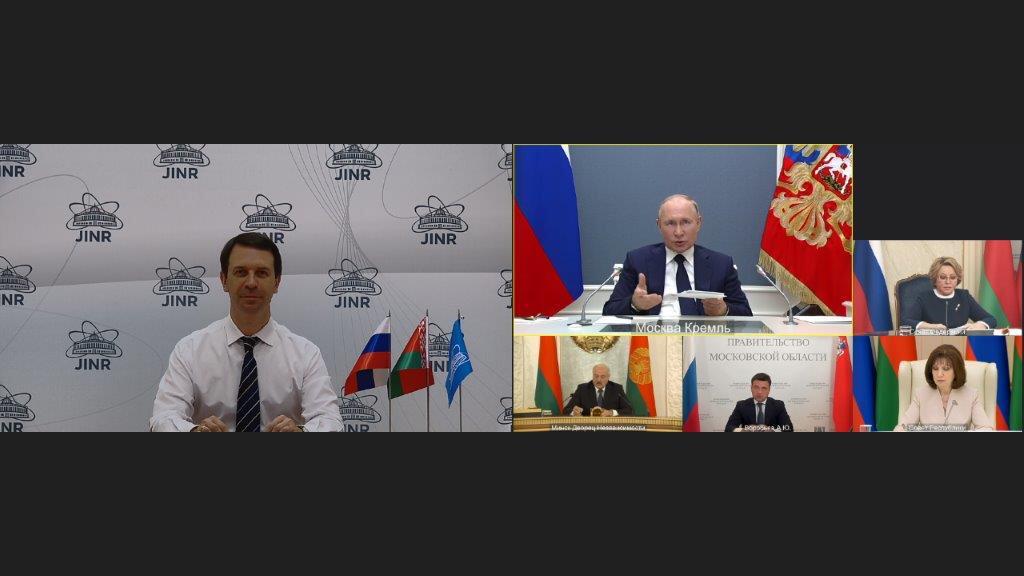NICA collider, driver of Russian-Belarusian scientific cooperation
News, 01 July 2021
Participants of the plenary session of the 8th Forum of Russian and Belarusian Regions noted the unique infrastructure of the NICA collider in Dubna as one of the most significant points of growth of interstate cooperation in the fields of science and technology. The topic of this year’s Forum was the scientific and technical cooperation of Russia and Belarus in the era of digitalization. The event with the participation of the presidents of the two countries took place today in a mixed format. JINR Director Grigory Trubnikov was one of the participants of the plenary session.
Speaking about high-tech Russian and Belarusian projects, President of the Russian Federation Vladimir Putin paid special attention to the cooperation in the fields of peaceful nuclear applications.
Thus, under the auspices of the Union State, it is planned to create an infrastructure for joint basic and applied research, including in the fields of nuclear physics.
“Our countries have been long and fruitfully cooperating in the scientific and technical area. One of the priorities of this cooperation is to form the information and scientific-technological space of our countries within the action plan on the creation of common information space of the Union State up to 2025. A unique mega-science infrastructure will be created in Russia by 2024 as part of the Synchrotron and Neutron Research Development Programme. It includes four projects to which general access will be provided, namely PIC, NICA, KISI, and SKIF,” Deputy Prime Minister of the Russian Government Dmitry Chernyshenko said. “The NICA project, superconducting rings at colliding heavy ion beams, is being created at the Joint Institute for Nuclear Research in Dubna, and the Republic of Belarus is a Member State of the organization. The Russian-Belarusian Committee for Scientific and Technical Cooperation coordinates joint work.”
Governor of the Moscow region Andrey Vorobyev highlighted the importance of scientific and technological international integration, “The president of the Russian Federation signed a significant decision on the construction of the NICA collider in Dubna, which completes at the end of 2022-early 2023. The project engages 90 world-leading institutes from 26 countries, including Belarus that takes an active part in it.”
Director General of the Joint Institute for Power and Nuclear Research – Sosny of the National Academy of Sciences of Belarus Andrey Kuzmin proposed to develop a joint strategy on the organization of scientific integration for the creation of joint research space in the light of the interest of both countries. As an important step towards it, it is offered to create a Centre of Nuclear Science and Technology in the territory of the Joint Institute for Power and Nuclear Research – Sosny. The multipurpose research reactor should be the basis for joint use as the site for joint work of Belarusian and Russian scientists in a number of areas: nuclear medicine, energy, industry, agriculture, and science.
JINR Director Grigory Trubnikov commented on the milestones of the event, “Nowadays, we develop unique superconducting technologies for medicine, electronics industry, ecology, material science with the participation of high-tech enterprises of Belarus and Russia. Support of the scientific and technical programme of the Union State “Accelerator Complex Based on Superconducting Resonators (SCR Accelerator)” is very important. This joint work brightly exemplifies the deep scientific and technical cooperation of scientists from Belarus and JINR: institutes and universities. The results obtained will be the future basis for new bilateral projects and the creation of high-tech production in Belarus.”
